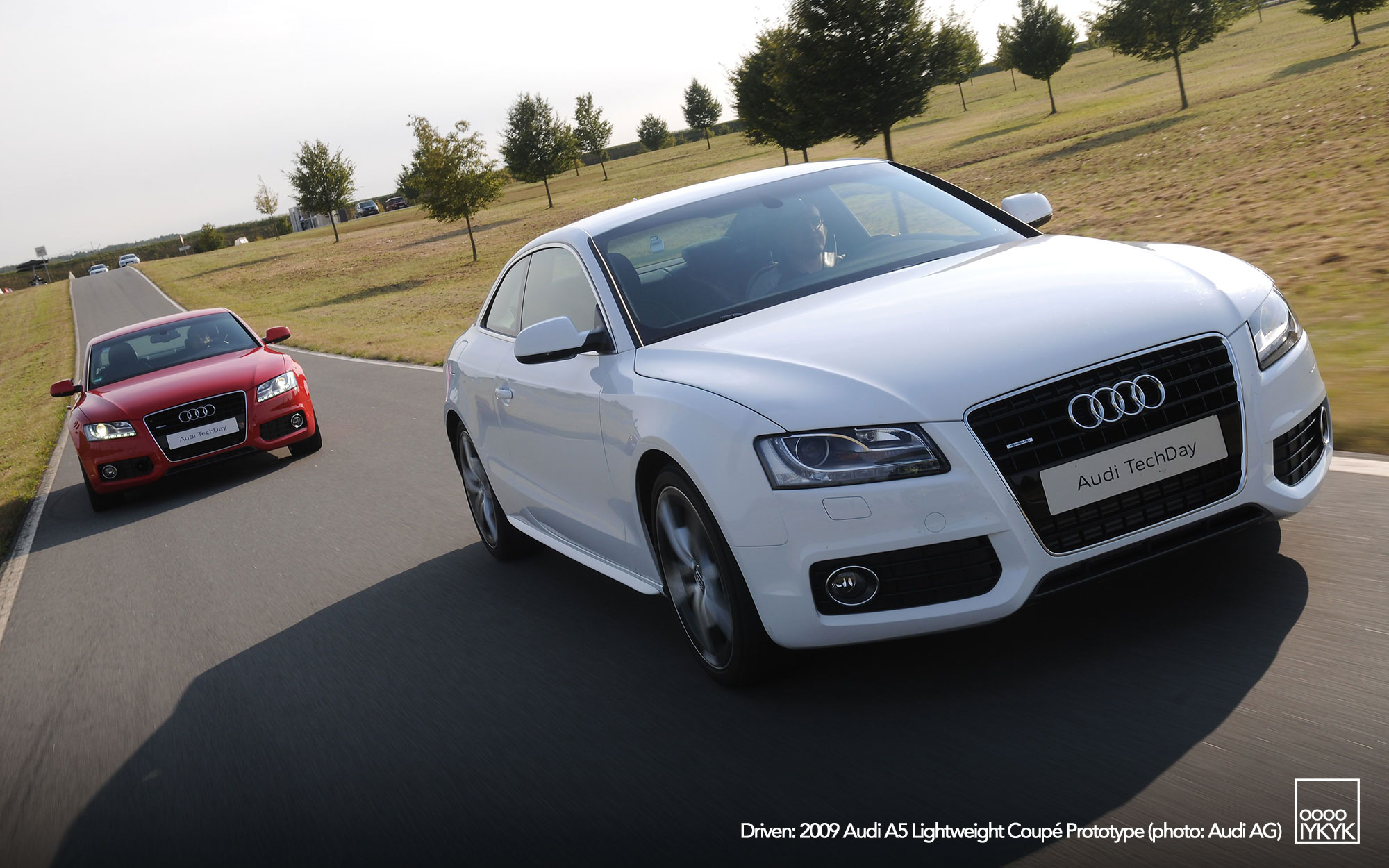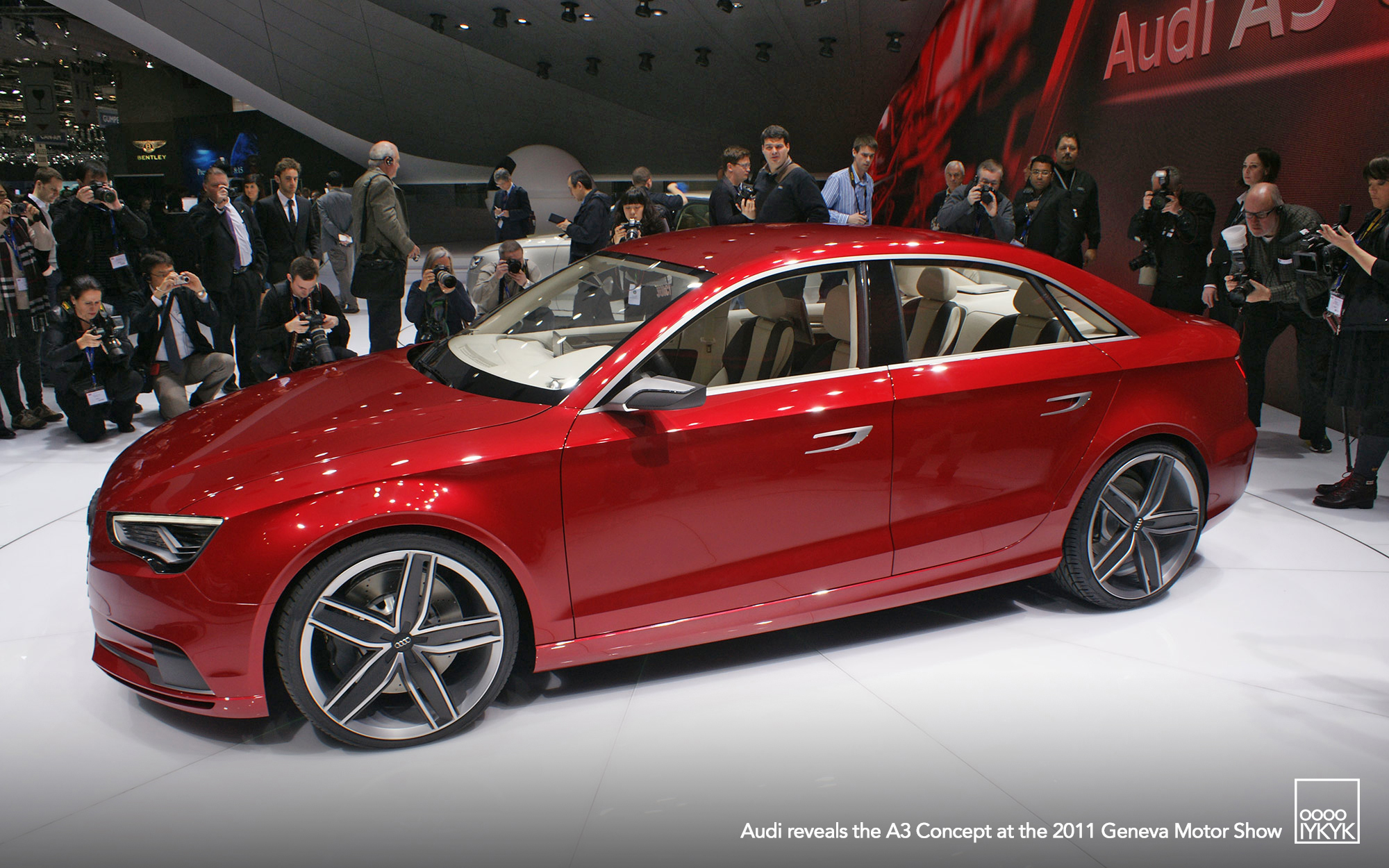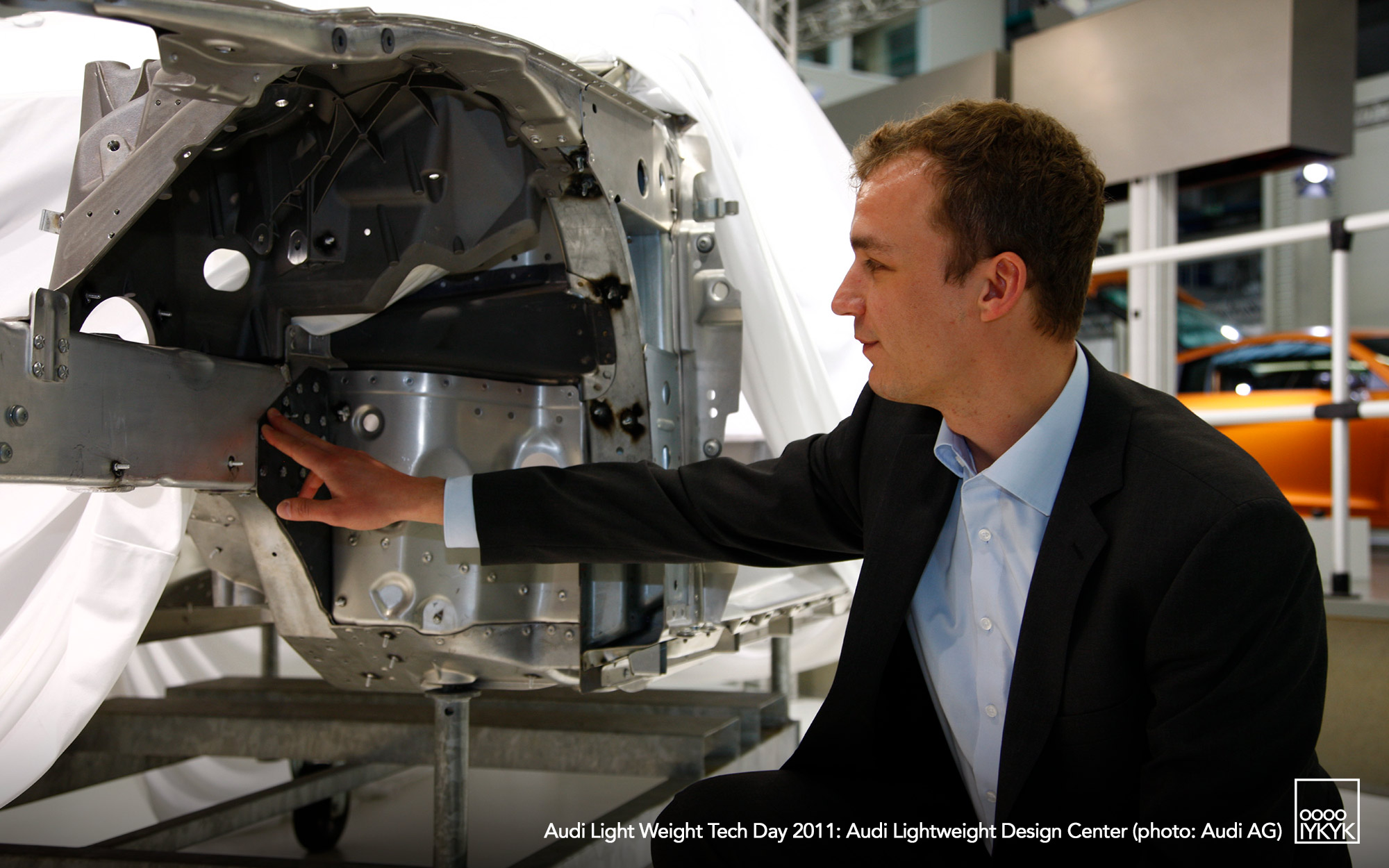It was just 48 hours before the 2011 Geneva Motor Show, and I was running on fumes. A whirlwind tour had carried me from Audi’s Lightweight Design Center in Neckarsulm, Germany to Lamborghini’s new carbon composite development hub in Sant’ Agata, Italy—complete with a walk through the early Aventador production line. My jet-lagged brain was overloaded with engineering marvels, but over a dinner of decidedly non-lightweight pasta on the shore of Lake Lugano, conversation turned to one particular highlight from the trip: a humble-looking Audi A5 coupe that, internally, carried the nickname “The Beast.”
Editor’s Note: This story is Part 2 in the quattro Redux Series. Catch the first installment Part 1 HERE.
To the casual eye, “The Beast” appeared to be a simple B8 A5 in forget-me silver and a few mild tweaks. But to the engineers at Audi Sport GmbH (then quattro GmbH), this car was special. This car was a drivetrain mule for the 2010 quattro Concept that had debuted months earlier in Paris—a tangible, drivable test bed for lightweight construction ideas intended to impress Audi’s top brass. So, what was just beneath the skin this simple A5 test car served as the physical proof of concept for that vision.

In fact, I suspected I’d seen it before. At a previous lightweight TechDay at Bosch’s Boxberg facility, Audi had brought along an A5 prototype reportedly made almost entirely of aluminum and other lightweight materials. One of allegedly four such cars, that A5 had been powered by a 2.0 TFSI and looked utterly ordinary. I had even driven it, assuming at the time that it was a full Audi Space Frame (ASF) experiment. Around a table of journalists from Car and Driver, Motor Trend, and Road & Track, I half-convinced myself that I was the resident expert.
That illusion didn’t last long. When Road & Track’s Shaun Bailey began probing how Audi could feasibly construct a fully aluminum A5 without specialized tooling, my confidence evaporated. His questions—sharp, technical, and entirely fair—made me realize I was out of my depth. I did the only sensible thing: stopped talking and focused on the pasta.

Two days later, standing on Audi’s Geneva Motor Show stand as the A3 Sedan Concept debuted, Bailey’s questions still echoed in my head. How had they built those cars? When I’d driven that prototype in 2009, I thought of aluminum only in the context of Audi’s ASF—an entirely aluminum architecture used for the A8. I had assumed Ingolstadt could build anything on command. But it wasn’t that simple.
The answer had been right in front of me just days earlier at Audi’s Lightweight Design Center. There, displays showed components like magnesium strut caps and hybrid aluminum-steel B-pillars designed to shed mass while maintaining strength. Among the exhibits, one piece stood out: a partially covered bare chassis roughly the size of an A4, labeled “MLB-Evo.”
At the time, MLB (Modular Longitudinal Baukasten) was Audi’s flexible platform strategy, used across everything from the steel A4 to the aluminum A8. MLB-Evo, as its name implied, was the next evolutionary step—mixing materials for optimal weight, rigidity, and crash performance. Audi’s engineers had been perfecting ways to join these dissimilar materials using flow-drill screws, friction welding, and punch riveting, all sealed with adhesive layers to prevent corrosion. It wasn’t as pretty as the sculpted ASF, but it was stronger, lighter, and cheaper to build.

That’s when it all clicked. Standing amid the flashing cameras and reporters crowding around the A3 Concept, my thoughts leapt back to “The Beast.” The lightweight A5 test mule I’d driven wasn’t just a random aluminum experiment—it was likely an early, running prototype of the MLB-Evo architecture.
I spotted a familiar Audi AG contact nearby and made my way over. After exchanging pleasantries, I floated the theory that the A5 2.5 TFSI mule was effectively a pre-production MLB-Evo prototype. His response came with a knowing smile: “Essentially yes.”
It made perfect sense. MLB had already standardized components across vehicle classes to cut costs and streamline production. MLB-Evo went further, allowing each section of the car—such as cast magnesium strut towers—to be material-optimized. That flexibility would make it possible not only to build the quattro Concept efficiently but also to construct a handful of lightweight A5 mules for testing without massive tooling costs.
So yes, “The Beast” wasn’t just a Frankenstein A5. It was a glimpse into Audi’s future—a modular, multi-material structure that would underpin everything from the 2015 Q7 to the latest generation of performance cars.
That’s a long setup, and it doesn’t even cover how the car actually drove. For that, you’ll have to wait for Part 3.
Read more about “The Beast” in the ooooIYKYK Archive.
Next up? quattro Redux, Part 2: The Beast
Read more about the A5 Lightweight 2.5 TFSI Coupé Prototype known as “The Beast” in the ooooIYKYK Audi Archive, a four rings reference project from ooooIYKYK.


